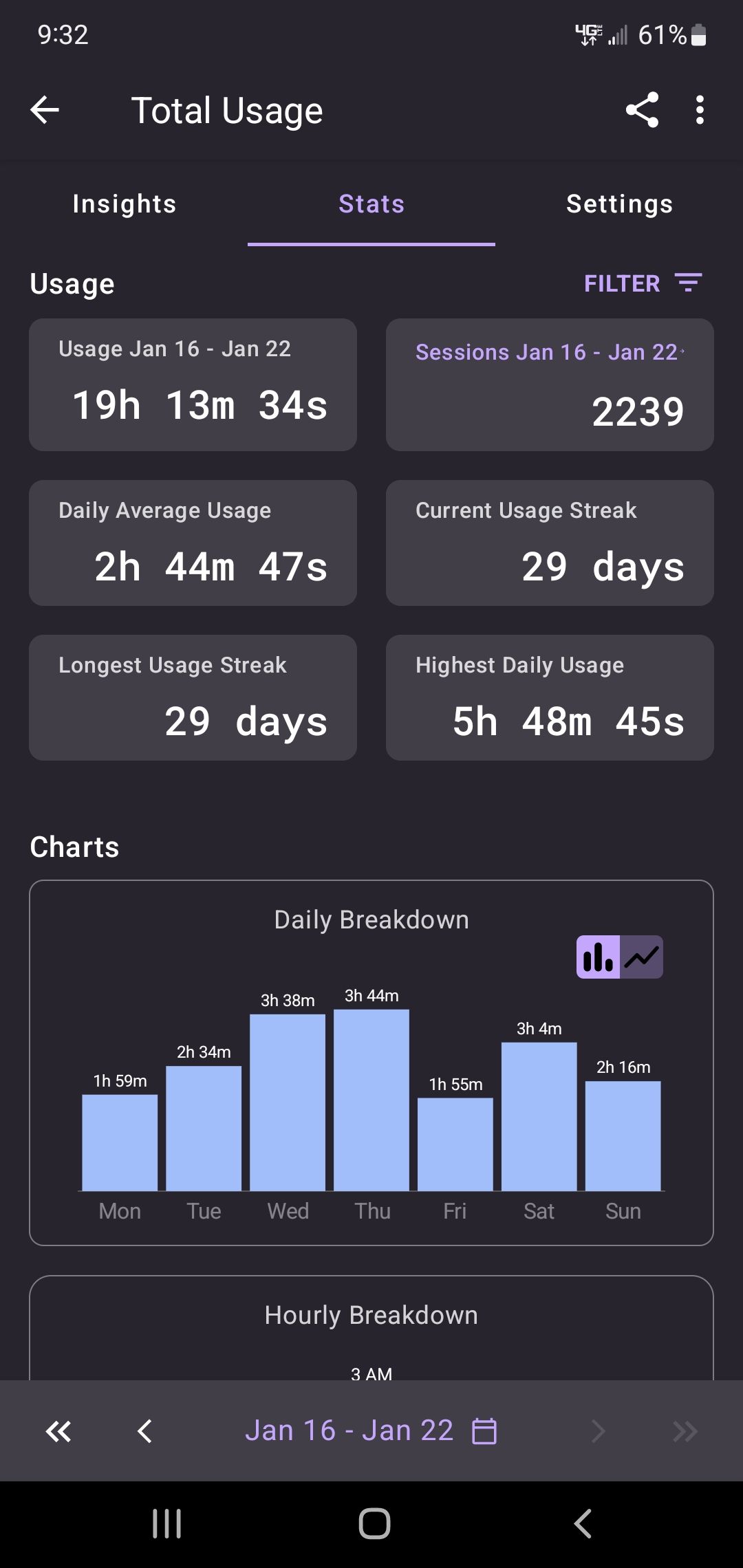Screen Time

A recurring theme that I've been writing about is taking back control of your attention from screens.
One of the reasons that I write about this a lot is the fact that this is an issue that I struggle with.
I love learning. I love stories. It is easy for me to get sucked into a screen. The internet is a dangerous place for me.
One moment I will be looking up the phone number for a nursery, the next moment I will find myself coming out of a Youtube binge that lasted over a half hour.
I have excused and justified this behaviour for too long.
I have important projects and people that I want that attention to go to. We are talking hours of time. Thousands of moments interrupted by the phone.
I want to be in control of my attention. I want to spend my attention on the things that are most valuable.
If I am going to watch something, I want it to be a choice. I want to choose that now is a good time to watch this content.
I don't want to let AI use me.
I don't want the way I use my time to be dictated by an algorithm that is programmed to make other people money off the back of my attention.
In The Power of Habit, Charles Duhigg shares some fascinating stories about how habits form in our basal ganglia.
One of the most powerful takeaways for me is the fact that we do not have to be conscious of the behaviour for it to turn into a habit.
If there is a dopamine drip associated with a repeated action, the basal ganglia will pick up on that and you will find yourself doing something even if you don't think about it.
The example they shared was how a person with a severe brain injury with no short term memory still learned new habits. They had no idea why they were doing things, but they still did them.
The basic habit formation format is trigger-behavior-reward. Something happens, you do something, and then you get something you want.
The shorter the time frame that this happens in, the more likely it is to become a habit. This is why short-form video is taking over right now. Tik-Tok has all the attention because it is designed to develop habitual zombie scroll.
Once the habit forms, you get locked in the habit loop by craving. The habit format becomes trigger-craving-behaviour-reward.
Something happens, your brain knows that a reward is possible and desperately wants it, you do the activity, and then get the reward.
Here's the kicker - once the habit forms, brain activity plummets once the trigger happens.
In other words, once you form the habit, you are less likely to even notice what you are doing. You go on autopilot any time the trigger happens.
Does this sound familiar? It does for me.
This is why it isn't enough to just say that you are going to work on something. If you have a bad habit, you must replace the bad habit with new material.
The most powerful thing you can do in my experience is change the triggers.
Eliminate them if possible.
Disrupt the pattern before the action part of the habit starts.
The next thing is giving yourself a new script to run instead of the old one. Combining the two is even stronger.
I have good news one this front. I am making progress.
When I first confessed of my phone troubles, I reported over 4 hours and 9 minutes of daily screen time on my phone.
The bigger problem was how often I was picking up my phone. I had allowed an obsessive tic to develop where I would repeatedly check my phone all day for new messages and calls and emails.
I made a couple changes to my triggers and behaviour since then that have unlocked huge results in a short period of time.
The first is adopting the simple Pomodoro time management system for running the entire farm. The basic idea is aiming to do work in 25 minute bursts of focused attention, followed by a 5 minute break.
We have regular longer breaks built into our day at fixed intervals, and we've set a new rule that the phone can only be used for messaging and calls at these times unless the communication is essential to the focused work.
If you break the rule, you don't get to count your Pomodoro. We've made it a game that we're all playing.
I'll explain all of the rules of the game if anyone is interested.
This means that my main communication is coming on schedule from 9:30-10:00, 12:00-1:00, 3:00-3:30, and 5:30-7:30 not including dinner.
Turns out this is plenty of time. My responsiveness is actually improving because I know that I can't answer in 20 minutes after thinking about it. I need to take care of this now or it will be a while.
I should say that this is what I'm aiming at. I have been getting better every day. The more I follow this system, the more clear the results are.
I have gotten more done and felt better over the past 10 days than I have in a long time, and this is directly connected to the fact that I am spending a lot more time focused.
Another thing we're doing with the Pomodoros is saying that they don't have to be work. The idea is merely focused time. We are choosing that these are the things we want our attention to flow towards for the next 25 minutes.
After 25 minutes, we step back and do all the things that you already spend time doing throughout the day. Get a drink. Go pee. Stretch.
One of the biggest concerns going in was that taking a break so often would disrupt work. We are finding the opposite to be true. Condensing all the non-focused stuff down into the 5 minute breaks is leading to much more work getting done.
We also check in with our commonplace book. We review our next actions list. We check and make sure that things are going to plan. If we got distracted, we make a note of what happened.
Things regularly do not go to plan. No big deal. This structure gives us that moment of reflection needed to adapt our plans and change course while making sure the most important stuff is still getting done.
Rather than stressing me out, this structure has been freeing. We have gained so much insight regarding how we use our time.
So this is one way that we've combatted screen time.
I have done a couple other things.
I deleted apps that I didn't need or want.
I installed an app called StayFree, which is a better time tracker.
Recently, I took things a step further and installed a "launcher" called O-launcher.
O-launcher doesn't change anything about using your apps, but it changes how they look on your home screen and menu. The icon grid is replaced with a list of app names.
The idea behind it is to help you become more intentional with your app usage.
The icon triggers your brain with the desire for the dopamine rush associated with using the app, and before you know it you are tap, tap, tapping away on all those icons.
I have found that O-launcher delivered a huge blow to my habit loops. I have only had it for a couple days, but this has been magic.
My apps are there, I'm just using them more when I want to and less when I don't.
Here's what it looks like on the home screen:

Super bare bones.
Here is the menu:

If there is a part of you yelling that you don't like it and you want your icons and that things will be too hard to find, those are sure signs that it will help you.
Anyway, the new StayFree app tracks more things for screen time than the regular screen time tracker.
According to StayFree, the week before I announced my intention to work on this my phone usage was 5 hours and 53 minutes a day with a total of 3668 "sessions" over those 10 days.

In the 10 days since then, my daily phone usage has been 2 hours and 35 minutes with a total of 2718 sessions over those 10 days.
That is some dramatic improvement. I can't wait to see what the numbers look like after some time with O-launcher installed.

I'll get back to tree talk very soon.
Thanks for following along on all the journeys, including my quest for better habits and more control of my time.
I think it is an important one.
Here's to increased focus, wellbeing, and happiness.
Life is good.
P.S. If you know of anyone who may be interested in following along with any of this, especially the tree talk stuff, please consider forwarding one of the emails to them or sending them a link to the site.
Links:
- Houston, We Have A Problem (First screen time report)
- Simple
- Tree Talk, Vol. 2: Beating the Drum
